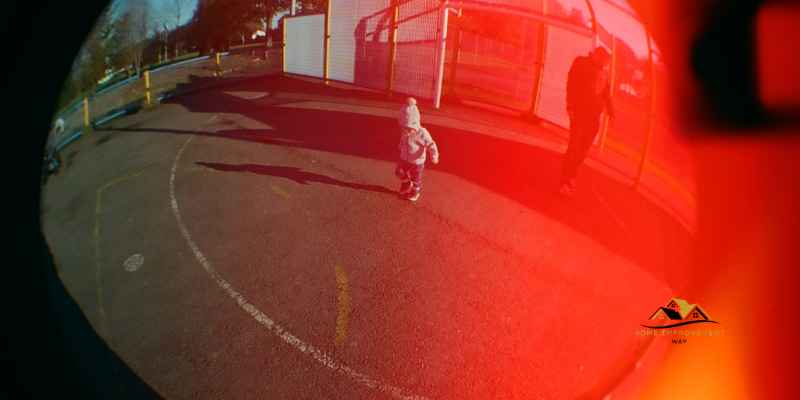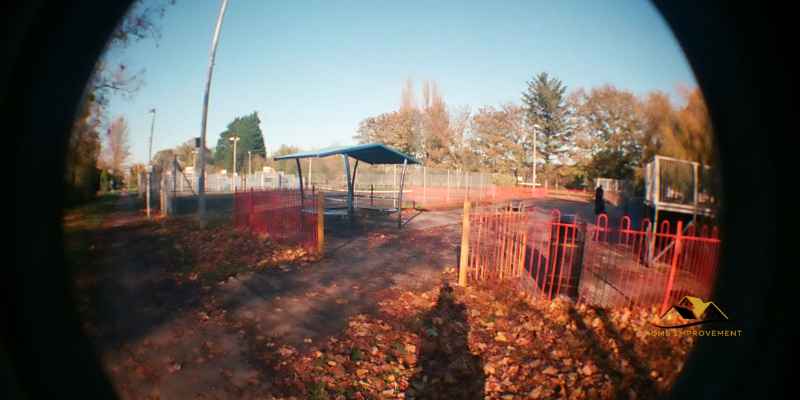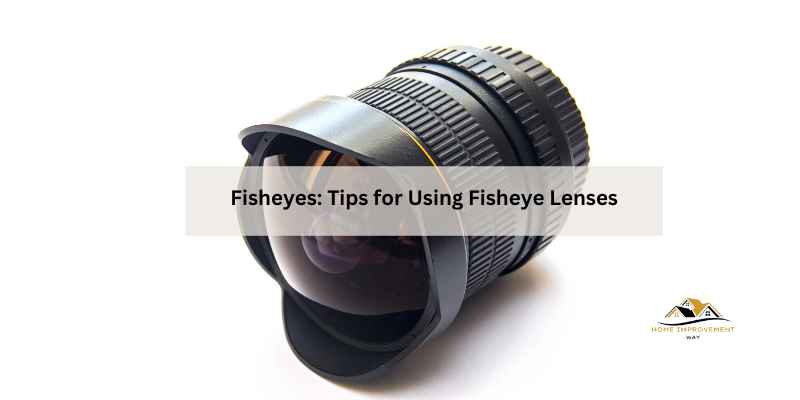Fisheyes are small circular, crater-like openings that appear during or shortly after application, potentially caused by painting over surfaces contaminated. Fisheye lenses are ultra wide-angle lenses that produce strong visual distortion intended to create a wide panoramic or hemispherical image.
Fisheyes can occur in various applications such as car paint, photography, and plasterwork, leading to surface defects and visual distortions. Understanding the causes and preventive measures for fisheyes is essential in maintaining the quality of the final product, whether it’s a painted surface or a photographic image.
This article provides insights into the causes of fisheyes, their impact, and ways to prevent and repair them across different applications. Whether you’re a painter, photographer, or working with other applications susceptible to fisheyes, understanding their causes and solutions is crucial for achieving a flawless finish.
Understanding Fisheyes
Fisheyes are a common issue encountered in various applications, ranging from photography to car paint and even epoxy coatings. They manifest as small circular openings or distortions, affecting the overall quality of the final product. Understanding the causes of fisheyes is crucial in preventing and addressing this issue effectively.
Definition Of Fisheyes
A fisheye is an ultra wide-angle lens that produces strong visual distortion, often intended to create a wide panoramic or hemispherical image. In the context of other applications, fisheyes refer to small circular, crater-like openings that appear on surfaces, such as in car paint or epoxy coatings.
Causes Of Fisheyes In Different Applications
1. Contamination: Surfaces contaminated with substances like silicone, oil, or grease can lead to fisheye formation during or after application, particularly in painting and coating processes.
2. Inefficient Mixing: In mixing processes, inadequate blending can result in agglomerates and “fish eyes,” which pose challenges in achieving a smooth, uniform outcome.
3. Lens Distortion: In photography, fisheye lenses intentionally create distortion for artistic or panoramic effects. However, improper use or lens defects can lead to unintended fisheye distortions in captured images.
Exploring Fisheye Lens Applications
Fisheye lenses are versatile tools that offer unique perspectives in various fields. Let’s delve into how these lenses are utilized in different industries:
Photography
Fisheye lenses are widely used in photography to capture immersive and distorted images, adding a creative flair to landscapes and architectural shots.
Automotive Industry
In the automotive sector, fisheye lenses aid in enhancing safety by providing a broader field of view for drivers, especially in blind spots.
Painting And Coating
Painters and coating professionals utilize fisheye lenses to detect imperfections such as fisheyes, ensuring a smooth and flawless finish.
Tips For Using Fisheye Lenses
Fisheye lenses are fantastic for capturing expansive landscapes. To make the most of this lens, position yourself in a scenic location with interesting foreground elements.
For action-packed shots, get up close to the subject to emphasize speed and movement. Experiment with angles to create dynamic and immersive images.
Think outside the box when using fisheye lenses. Try unique perspectives and play with distortion to create visually striking photos that stand out.
Preventing And Fixing Fisheyes
To prevent and fix fisheyes in car paint, ensure the surface is clean and free of contaminants before application. Proper mixing techniques and using high-quality materials can help eliminate fisheyes for a smooth finish. Identifying and addressing the issue promptly can save time and resources in the long run.
Identifying Fisheyes
Fisheyes are small circular, crater-like openings that appear during or shortly after application. They can be caused by various factors such as surface contamination or improper mixing.
Preventive Measures
To prevent fisheyes, it’s essential to ensure thorough surface preparation, including cleaning and degreasing. Additionally, using compatible primers and paints, as well as maintaining proper mixing techniques, can help minimize the risk of fisheye formation.
Repair Techniques
If fisheyes occur, it’s crucial to address the issue promptly. One effective repair technique involves sanding down the affected area and reapplying the paint or coating using proper mixing and application methods to prevent further fisheye formation.
Common Misconceptions About Fisheyes

Fisheye lenses are often misunderstood due to various misconceptions that surround them. By debunking these myths, we can gain a better understanding of the capabilities and uses of fisheye lenses.
Myths Surrounding Fisheye Lenses
Myth 1: Fisheye lenses are only for capturing distorted images.
Contrary to popular belief, fisheye lenses can be versatile tools for creative photography beyond just distortion. They offer a unique perspective that can enhance landscape and architectural shots.
Myth 2: Fisheye lenses are not suitable for professional photography.
Many professional photographers use fisheye lenses to add a dynamic element to their work. These lenses can capture wide angles and create compelling visual effects that traditional lenses cannot achieve.
Debunking Popular Beliefs
- Fisheye lenses do not always result in extreme distortion. While fisheye lenses can produce a distorted look, they can also capture stunning panoramic views with minimal distortion when used appropriately.
- Fisheye lenses are not limited to specific genres of photography. They can be used in various photography styles, from landscapes to portraits, adding a creative touch to the images.
- Fisheye lenses are not just gimmicky accessories. When used skillfully, fisheye lenses can produce visually striking and professional-quality images that stand out from traditional photographs.
Innovations In Fisheye Technology
Fisheye lenses have come a long way in recent years, with several notable advancements in technology. These innovations have expanded the possibilities for creative photography and videography, making fisheye effects more accessible and versatile than ever before.
Advancements In Lens Design
The latest advancements in fisheye lens design have focused on enhancing optical performance and reducing distortion. New materials and coatings have been developed to improve image quality, minimize chromatic aberration, and enhance overall clarity. Additionally, compact and lightweight designs have made fisheye lenses more portable and convenient for photographers and videographers on the go.
Software Solutions For Fisheye Effects
Software developers have introduced innovative solutions for creating fisheye effects in post-processing. Advanced algorithms and image processing techniques allow for the correction of distortion and the manipulation of perspective, giving content creators greater control over the final look of their fisheye imagery. Moreover, intuitive interfaces and user-friendly tools have made it easier for artists to experiment with fisheye effects and integrate them seamlessly into their creative workflows.

Frequently Asked Questions
What Is A Fisheye?
A fisheye is an ultra wide-angle lens that creates a hemispherical or panoramic image with strong visual distortion. It is used by photographers and videographers to capture action shots while retaining context. Fisheyes can also refer to surface defects in plasterwork or car paint, circular openings in mixing processes, and slang for tapioca pudding.
What Causes Fisheyes In Paint?
Fisheyes in paint are caused by surface contamination or improper cleaning before painting, which leads to the paint not adhering properly.
What Does It Mean To Give Someone A Fish Eye?
Giving someone a fish eye means looking at them with suspicion or unfriendliness.
Why Do People Use Fisheye?
Photographers and videographers use fisheye lenses to capture action shots while still showing context. Fisheye lenses produce strong visual distortion, creating a wide panoramic or hemispherical image.
Conclusion
To sum up, fisheye lenses are a unique and powerful tool for photographers and videographers. They produce stunning visual distortions that can add a creative and artistic flair to your work. However, it’s important to understand how fisheyes occur and how to prevent them in painting and other applications.
Whether you’re shooting landscapes or repairing fish-eyes, proper technique and attention to detail can make all the difference. So go ahead and experiment with fisheye lenses, and see how they can take your photography to the next level!

